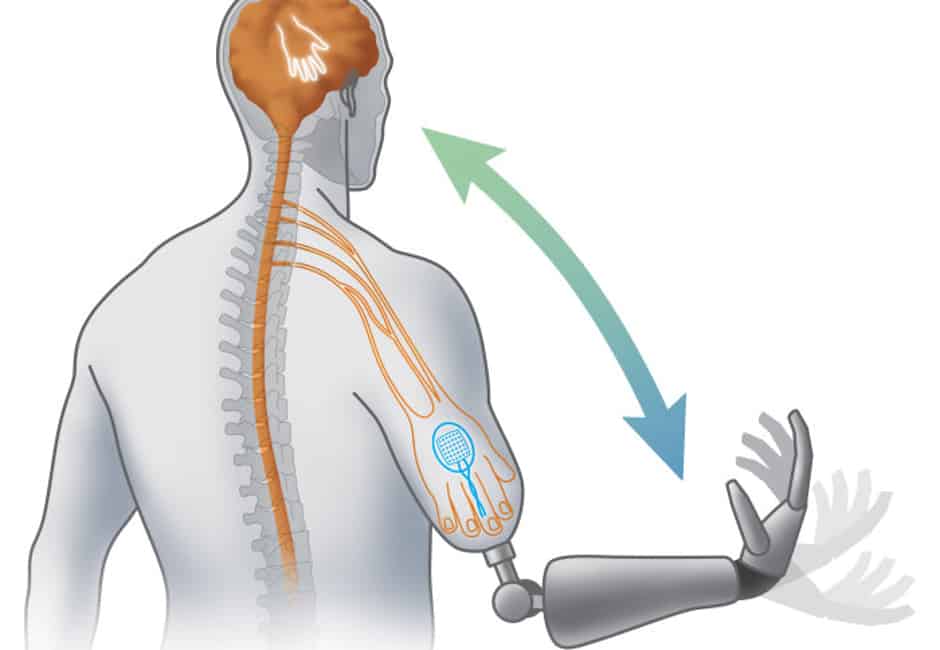Imperial leads project to give natural sensations to prosthetic limbs
Researchers at Imperial College London have been awarded a €10m European Research Council (ERC) Synergy Grant to work with partners in delivering natural sensations to prosthetic limbs..
Researchers at Imperial College London have been awarded a €10m European Research Council (ERC) Synergy Grant to work with partners in delivering natural sensations to prosthetic limbs.

The grant was awarded to an international group, led by Imperial College London’s Professor Dario Farina, that will develop prosthetic arms and legs that can sense the environment and deliver sensations to patients.
Prof Farina, of Imperial’s Department of Bioengineering, said: “We have partly worked out how to let the brain command a prosthetic limb. Now, we want to reach fully natural control and to have the limbs talk back to the brain via natural sensations.”
In 2017, Prof Farina’s research group developed an arm that patients could move at will, by using a sensor to pick up movement from muscles in a stump and convert them into commands for the arm.
https://www.theengineer.co.uk/sensor-technology-extends-range-of-movement-for-prosthetic-arms/
The researchers will now work with a selection of patients to develop a novel breakthrough idea for controlling and feeling robotic limbs.
Register now to continue reading
Thanks for visiting The Engineer. You’ve now reached your monthly limit of news stories. Register for free to unlock unlimited access to all of our news coverage, as well as premium content including opinion, in-depth features and special reports.
Benefits of registering
-
In-depth insights and coverage of key emerging trends
-
Unrestricted access to special reports throughout the year
-
Daily technology news delivered straight to your inbox










Water Sector Talent Exodus Could Cripple The Sector
Well let´s do a little experiment. My last (10.4.25) half-yearly water/waste water bill from Severn Trent was £98.29. How much does not-for-profit Dŵr...